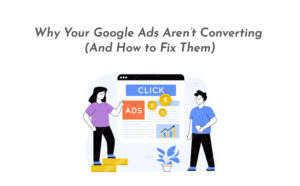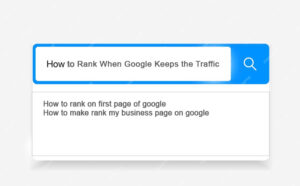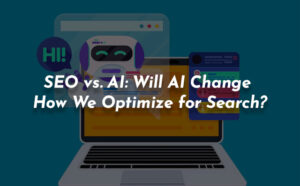Introduction
The Importance of Selecting the Right Advertising Platform
In the digital age, where competition for consumer attention is fierce, selecting the appropriate paid advertising platform is a pivotal decision for any business. The right platform can be the difference between a campaign that soars and one that fails to gain traction. Making an informed choice is crucial to achieving advertising success and maximizing return on investment (ROI).
Understanding the Dynamics of Paid Advertising
Paid advertising is a powerful tool that enables businesses to reach targeted audiences with precision. However, the landscape is complex, with a myriad of platforms offering various features, audience types, and pricing models. Understanding these dynamics is essential for selecting a platform that aligns with your business goals and marketing strategy.
Assessing Your Business Goals
Aligning Advertising Objectives with Business Outcomes
Before diving into platform selection, it’s imperative to clearly define your business goals. Are you looking to increase brand awareness, drive immediate sales, or build a long-term customer base? The objectives you set will guide your choice of platform, ensuring that your advertising efforts contribute directly to your overarching business outcomes.
You would like to read: Maximizing ROI: The Importance of Audience Targeting in Paid Advertising
Short-term vs. Long-term Advertising Strategies
Your advertising strategy should also consider the timeline of your goals. Short-term campaigns may benefit from platforms known for immediate results, such as Google Ads or Facebook Ads, where you can quickly generate traffic. Conversely, long-term strategies might involve platforms that build brand loyalty over time, like LinkedIn for B2B marketing or Instagram for lifestyle brands.
Knowing Your Target Audience
Demographic Insights and Platform Preferences
Understanding your target audience is a cornerstone of effective advertising. Different platforms cater to different demographics. For instance, younger audiences may be more active on TikTok or Instagram, while professionals might gravitate toward LinkedIn. Analyzing demographic insights helps you choose a platform that aligns with where your potential customers spend their time.
Behavioral Targeting: Reaching the Right Audience
Beyond demographics, behavioral targeting allows you to reach users based on their online behaviors and interests. Platforms like Facebook and Google offer robust targeting options that let you hone in on users who are most likely to engage with your ads. This ensures that your advertising dollars are spent reaching those who are most likely to convert.
Evaluating Platform Features
Understanding Ad Formats and Creative Options
Different platforms offer various ad formats, from video ads to sponsored posts to search ads. Understanding these formats and how they align with your creative strategy is essential. For example, if your business thrives on visual content, Instagram or Pinterest might be ideal. Alternatively, if you rely on text-heavy ads, Google’s search network could be more effective.
Analyzing Platform-Specific Tools and Analytics
Each advertising platform comes with its own set of tools and analytics. Some platforms offer advanced features like A/B testing, audience insights, and detailed performance metrics. Analyzing these tools can help you make data-driven decisions and optimize your campaigns for better results.
You would like to read: Google Ads Mastery: Transforming Traffic & Conversions!
Budget Considerations
Cost-per-Click (CPC) vs. Cost-per-Impression (CPM)
Budget is a significant factor in choosing an advertising platform. Understanding the difference between cost-per-click (CPC) and cost-per-impression (CPM) models is crucial. CPC might be more appropriate if your goal is to drive traffic to your website, while CPM could be better for brand visibility. Balancing these models with your budget helps ensure cost-effective campaigns.
Balancing Budget with Expected ROI
While it’s tempting to choose a platform with the lowest cost, it’s more important to consider the expected ROI. A platform that delivers higher-quality leads, even at a higher cost, might offer better long-term value. Carefully evaluating the cost against the potential return helps you make financially sound decisions.
Platform Popularity and User Base
The Impact of Platform Scale on Reach
The scale of a platform’s user base directly impacts your potential reach. Large platforms like Facebook and Google offer extensive reach, allowing you to target a broad audience. However, smaller, niche platforms might offer more targeted and engaged users, depending on your industry and goals. Evaluating the user base helps you understand the potential scope of your campaign.
Niche vs. Mainstream Platforms: What’s Right for You?
Mainstream platforms offer mass appeal, but niche platforms can provide a more focused audience. For instance, advertising on a platform like Reddit or Quora might yield better results if your business serves a specific community or interest group. Choosing between niche and mainstream platforms depends on your target audience’s specificity and your campaign goals.
Understanding the Competition
Analyzing Competitor Strategies on Various Platforms
Studying your competitors’ advertising strategies can provide valuable insights into which platforms are most effective in your industry. If your competitors are seeing success on a particular platform, it might be worth considering. Conversely, identifying gaps where competitors are less active can present opportunities for differentiation.
Leveraging Competitive Insights for Platform Selection
Competitive analysis goes beyond just observing; it involves leveraging insights to make strategic decisions. By understanding where your competitors are investing their advertising dollars, you can either follow suit or carve out a niche on a less saturated platform. This strategic approach can help you achieve better results by optimizing your platform selection.
Considering Industry Relevance
Industry-Specific Platforms and Their Advantages
Some industries have specific platforms that cater to their unique needs. For example, Houzz is popular in the home improvement sector, while Etsy is crucial for artisanal businesses. These platforms offer targeted audiences and features tailored to industry-specific advertising, making them valuable options for businesses within those niches.
Cross-Industry Platforms: Pros and Cons
Cross-industry platforms like Google Ads or Facebook are versatile, serving businesses across various sectors. However, while they offer broad reach, they may not provide the specialized targeting that industry-specific platforms do. Weighing the pros and cons of cross-industry platforms helps determine if their advantages align with your business needs.
Reviewing Case Studies
Success Stories from Different Platforms
Examining case studies of businesses that have successfully utilized different platforms can offer practical insights. Success stories provide evidence of what works and why, helping you make informed decisions about which platform might be right for your business. Learning from others’ successes can guide your strategy and inspire new ideas.
Lessons Learned from Failed Campaigns
Equally important are the lessons learned from failed campaigns. Understanding why a campaign didn’t perform as expected can prevent you from making similar mistakes. Analyzing these failures provides valuable knowledge on what to avoid and how to refine your approach.
Measuring and Optimizing Campaigns
Key Performance Indicators (KPIs) for Success
Once you’ve chosen a platform, measuring your campaign’s performance is crucial. Key performance indicators (KPIs) such as click-through rates (CTR), conversion rates, and customer acquisition costs (CAC) provide insights into your campaign’s effectiveness. Tracking these metrics allows you to gauge success and identify areas for improvement.
Continuous Improvement: Refining Your Approach
The digital advertising landscape is ever-changing, requiring constant vigilance and adaptation. Continuously monitoring and optimizing your campaigns based on performance data ensures sustained success. Refining your approach over time helps you stay competitive and maximize the impact of your advertising efforts.










